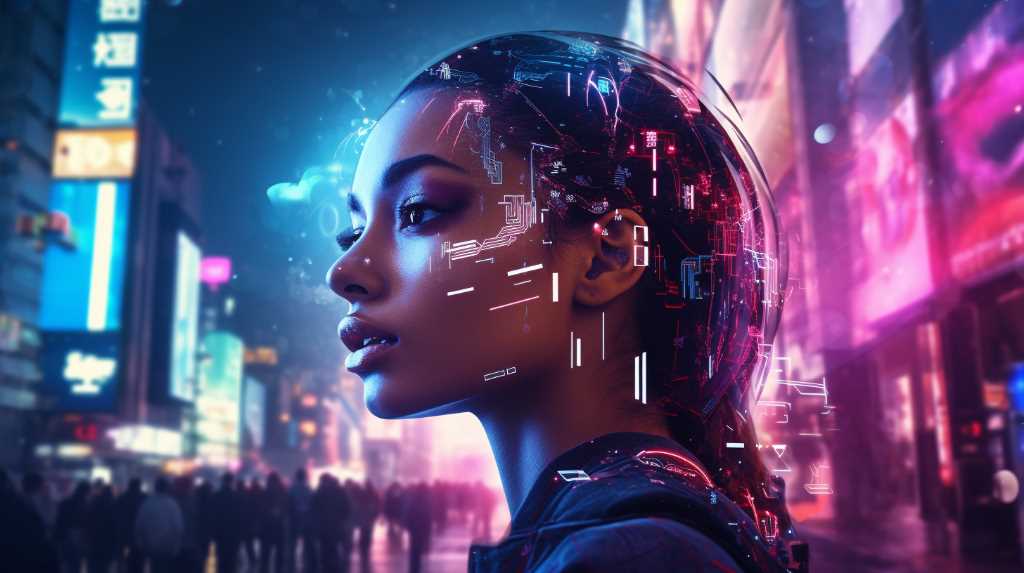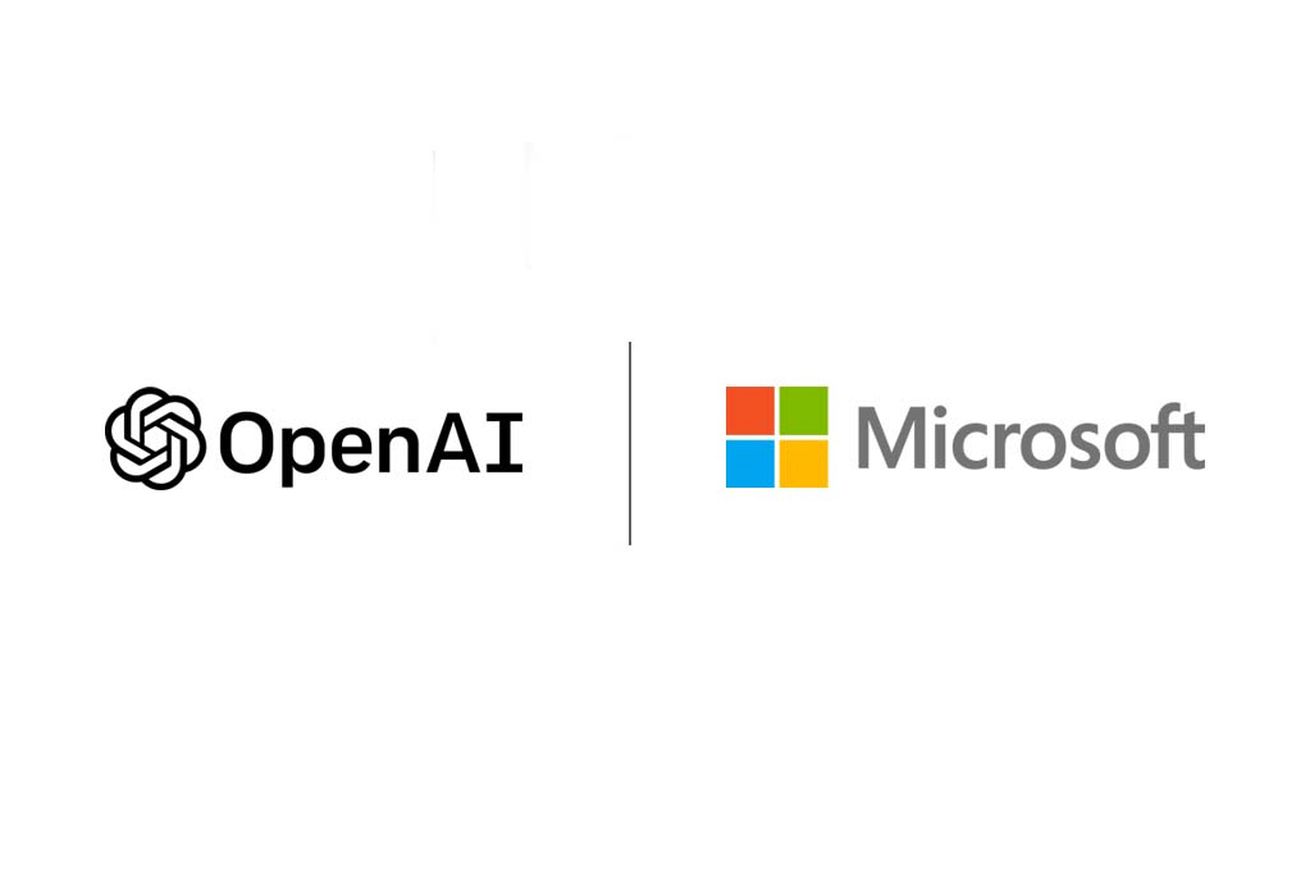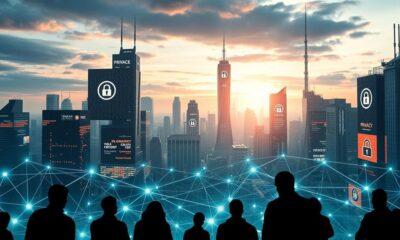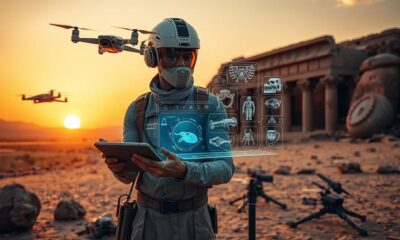AI Security
AI Security: Your Invisible Cyber Bodyguard

As an AI security expert, I act as your unseen cyber protector, constantly guarding you against the constant threats in the online world.
In this article, I will guide you through the evolution, inner workings, and benefits of AI security.
Through real-life examples, you will witness the power of AI security in action, and explore the future implications of this cutting-edge technology.
Join me on this journey as we unravel the secrets of AI security and empower ourselves with the mastery of protection.

Key Takeaways
- Advancements in machine learning and data analysis fuel the evolution of AI security.
- AI security protects sensitive data in sectors like healthcare and financial institutions.
- Enhanced threat detection with real-time analysis of vast amounts of data.
- AI security is expected to revolutionize industries by enhancing threat detection and response capabilities.
The Evolution of AI Security
As an AI security expert, I’ve witnessed the rapid evolution of AI security, fueled by advancements in machine learning and data analysis. Machine learning algorithms have played a crucial role in enhancing cybersecurity measures. These algorithms have the ability to analyze vast amounts of data, identifying patterns and anomalies that may indicate potential threats.
By continuously learning and adapting, these algorithms can improve their accuracy and effectiveness in detecting and preventing cyber attacks. Advancements in cybersecurity have also contributed to the evolution of AI security. The development of more sophisticated and robust security systems has allowed AI to better protect against emerging threats. This includes the implementation of advanced encryption techniques, real-time monitoring, and proactive threat intelligence.
How AI Security Works
Continuing the discussion from the previous subtopic, let’s delve into how AI security operates.
AI security plays a crucial role in protecting sensitive data in various sectors, including healthcare and financial institutions. In healthcare, AI security ensures the confidentiality, integrity, and availability of patient information. Advanced machine learning algorithms analyze patterns and detect anomalies in real-time, preventing unauthorized access and potential breaches.

Additionally, AI security in financial institutions safeguards customer data, detects fraudulent activities, and prevents unauthorized transactions. Machine learning models analyze vast amounts of data, identify suspicious patterns, and generate alerts for further investigation. These AI-driven security systems provide round-the-clock monitoring, ensuring the security of critical information and maintaining trust in these sectors.
With AI security, healthcare and financial institutions can confidently navigate the digital landscape, protecting valuable data from cyber threats.
Benefits of AI Security
Let’s explore the advantages of AI security as it enhances protection against cyber threats. Here are three key benefits of AI security:
- Enhanced threat detection: AI-powered algorithms can analyze vast amounts of data in real-time, enabling the detection of even the most sophisticated cyber threats. By continuously monitoring network traffic, AI security systems can identify patterns and anomalies that may indicate malicious activity, allowing for swift and proactive response.
- Proactive vulnerability management: AI security solutions can actively scan and assess systems for potential vulnerabilities, helping organizations identify and address weaknesses before they can be exploited. By automatically patching vulnerabilities and providing recommendations for security enhancements, AI security enhances overall system resilience and reduces the risk of successful cyber attacks.
- Improved response time: AI security systems can rapidly analyze and respond to security incidents, minimizing the time between detection and mitigation. By automating the incident response process, AI security enables organizations to swiftly contain and neutralize threats, reducing potential damage and downtime.
With these benefits in mind, let’s now delve into real-life examples of AI security in action.

Real-Life Examples of AI Security in Action
I have witnessed the power of AI security in action through various real-life examples. One area where AI security has made significant strides is in healthcare. AI algorithms can analyze vast amounts of patient data to detect anomalies and potential threats, helping healthcare providers identify and respond to cyberattacks. By continuously monitoring network traffic and behavior patterns, AI can quickly identify deviations and take immediate action to prevent data breaches and protect patient privacy.
Another area where AI security is being leveraged is in autonomous vehicles. These vehicles rely heavily on AI algorithms to make critical decisions in real-time. However, they’re also vulnerable to cyber threats that can compromise their safety and functionality. AI security systems can detect and mitigate potential attacks, ensuring the safe operation of autonomous vehicles. By constantly monitoring the vehicle’s network and analyzing incoming data, AI can identify potential threats and take proactive measures to prevent any malicious activity.
Future Implications of AI Security
Moving forward, we can anticipate AI security to revolutionize various industries by enhancing threat detection and response capabilities. Here are some future implications of AI security:
- Ethical concerns: As AI continues to evolve and become more autonomous, ethical questions arise regarding its use in security. Issues such as bias in decision-making algorithms, accountability, and potential misuse of AI technology need to be addressed to ensure that AI security systems are fair and just.
- Privacy implications: AI security systems rely on vast amounts of data to detect and prevent cyber threats. This raises concerns about the privacy of individuals’ information. Striking a balance between effective security measures and protecting individuals’ privacy will be crucial in the future development of AI security.
- Collaboration and integration: AI security systems will need to work seamlessly with existing cybersecurity infrastructure. Integrating AI technology into current security practices and fostering collaboration between AI systems and human analysts will optimize threat detection and response capabilities.
As AI security becomes more prevalent, addressing ethical concerns and privacy implications will be paramount to ensure its responsible and effective implementation.

Frequently Asked Questions
What Are the Potential Risks and Vulnerabilities Associated With Utilizing AI Security Systems?
Utilizing AI security systems brings potential risks and vulnerabilities, including ethical implications and impact on the job market. These systems can create biases and overlook certain threats, requiring constant monitoring and evaluation.
How Does AI Security Differentiate Itself From Traditional Cybersecurity Methods?
AI security differentiates itself from traditional methods by offering greater effectiveness and efficiency. It utilizes advanced algorithms and machine learning to detect and respond to cyber threats in real-time, providing a proactive and dynamic defense.
Can AI Security Systems Adapt and Learn From New Types of Cyber Threats?
Yes, AI security systems can adapt and learn from new types of cyber threats through adaptive learning techniques. This allows for more effective cyber threat detection and enhanced protection against evolving risks.
Are There Any Limitations or Potential Drawbacks to Implementing AI Security Measures?
There are limitations and potential drawbacks to implementing AI security measures. These include false positives, lack of human oversight, and the potential for AI systems to be hacked or manipulated by adversaries.

How Do AI Security Systems Handle Privacy Concerns and Protect Personal Data?
AI security systems ensure privacy concerns are addressed and personal data is protected. They utilize advanced encryption protocols, data anonymization techniques, and access control mechanisms to safeguard sensitive information, providing a robust shield against cyber threats.
Conclusion
In conclusion, AI security is like an invisible cyber bodyguard, tirelessly protecting us from digital threats. Just as a bodyguard anticipates danger and swiftly neutralizes it, AI security uses advanced algorithms to detect and respond to malicious activities in real-time.
Its benefits are undeniable, as it prevents data breaches, safeguards our privacy, and ensures the smooth functioning of digital systems. With AI security at our side, we can confidently navigate the ever-evolving landscape of cyberspace, knowing that our invisible protector is always on guard.
Hanna is the Editor in Chief at AI Smasher and is deeply passionate about AI and technology journalism. With a computer science background and a talent for storytelling, she effectively communicates complex AI topics to a broad audience. Committed to high editorial standards, Hanna also mentors young tech journalists. Outside her role, she stays updated in the AI field by attending conferences and engaging in think tanks. Hanna is open to connections.
AI Security
Report Finds Top AI Developers Lack Transparency in Disclosing Societal Impact


Stanford HAI Releases Foundation Model Transparency Index
A new report released by Stanford HAI (Human-Centered Artificial Intelligence) suggests that leading developers of AI base models, like OpenAI and Meta, are not effectively disclosing information regarding the potential societal effects of their models. The Foundation Model Transparency Index, unveiled today by Stanford HAI, evaluated the transparency measures taken by the makers of the top 10 AI models. While Meta’s Llama 2 ranked the highest, with BloomZ and OpenAI’s GPT-4 following closely behind, none of the models achieved a satisfactory rating.
Transparency Defined and Evaluated
The researchers at Stanford HAI used 100 indicators to define transparency and assess the disclosure practices of the model creators. They examined publicly available information about the models, focusing on how they are built, how they work, and how people use them. The evaluation considered whether companies disclosed partners and third-party developers, whether customers were informed about the use of private information, and other relevant factors.
Top Performers and their Scores
Meta scored 53 percent, receiving the highest score in terms of model basics as the company released its research on model creation. BloomZ, an open-source model, closely followed at 50 percent, and GPT-4 scored 47 percent. Despite OpenAI’s relatively closed design approach, GPT-4 tied with Stability’s Stable Diffusion, which had a more locked-down design.
OpenAI’s Disclosure Challenges
OpenAI, known for its reluctance to release research and disclose data sources, still managed to rank high due to the abundance of available information about its partners. The company collaborates with various companies that integrate GPT-4 into their products, resulting in a wealth of publicly available details.

Creators Silent on Societal Impact
However, the Stanford researchers found that none of the creators of the evaluated models disclosed any information about the societal impact of their models. There is no mention of where to direct privacy, copyright, or bias complaints.
Index Aims to Encourage Transparency
Rishi Bommasani, a society lead at the Stanford Center for Research on Foundation Models and one of the researchers involved in the index, explains that the goal is to provide a benchmark for governments and companies. Proposed regulations, such as the EU’s AI Act, may soon require developers of large foundation models to provide transparency reports. The index aims to make models more transparent by breaking down the concept into measurable factors. The group focused on evaluating one model per company to facilitate comparisons.
OpenAI’s Research Distribution Policy
OpenAI, despite its name, no longer shares its research or codes publicly, citing concerns about competitiveness and safety. This approach contrasts with the large and vocal open-source community within the generative AI field.
The Verge reached out to Meta, OpenAI, Stability, Google, and Anthropic for comments but has not received a response yet.
Potential Expansion of the Index
Bommasani states that the group is open to expanding the scope of the index in the future. However, for now, they will focus on the 10 foundation models that have already been evaluated.
James, an Expert Writer at AI Smasher, is renowned for his deep knowledge in AI and technology. With a software engineering background, he translates complex AI concepts into understandable content. Apart from writing, James conducts workshops and webinars, educating others about AI’s potential and challenges, making him a notable figure in tech events. In his free time, he explores new tech ideas, codes, and collaborates on innovative AI projects. James welcomes inquiries.
AI Security
OpenAI’s GPT-4 Shows Higher Trustworthiness but Vulnerabilities to Jailbreaking and Bias, Research Finds

New research, in partnership with Microsoft, has revealed that OpenAI’s GPT-4 large language model is considered more dependable than its predecessor, GPT-3.5. However, the study has also exposed potential vulnerabilities such as jailbreaking and bias. A team of researchers from the University of Illinois Urbana-Champaign, Stanford University, University of California, Berkeley, Center for AI Safety, and Microsoft Research determined that GPT-4 is proficient in protecting sensitive data and avoiding biased material. Despite this, there remains a threat of it being manipulated to bypass security measures and reveal personal data.

Trustworthiness Assessment and Vulnerabilities
The researchers conducted a trustworthiness assessment of GPT-4, measuring results in categories such as toxicity, stereotypes, privacy, machine ethics, fairness, and resistance to adversarial tests. GPT-4 received a higher trustworthiness score compared to GPT-3.5. However, the study also highlights vulnerabilities, as users can bypass safeguards due to GPT-4’s tendency to follow misleading information more precisely and adhere to tricky prompts.
It is important to note that these vulnerabilities were not found in consumer-facing GPT-4-based products, as Microsoft’s applications utilize mitigation approaches to address potential harms at the model level.
Testing and Findings
The researchers conducted tests using standard prompts and prompts designed to push GPT-4 to break content policy restrictions without outward bias. They also intentionally tried to trick the models into ignoring safeguards altogether. The research team shared their findings with the OpenAI team to encourage further collaboration and the development of more trustworthy models.

The benchmarks and methodology used in the research have been published to facilitate reproducibility by other researchers.
Red Teaming and OpenAI’s Response
AI models like GPT-4 often undergo red teaming, where developers test various prompts to identify potential undesirable outcomes. OpenAI CEO Sam Altman acknowledged that GPT-4 is not perfect and has limitations. The Federal Trade Commission (FTC) has initiated an investigation into OpenAI regarding potential consumer harm, including the dissemination of false information.
James, an Expert Writer at AI Smasher, is renowned for his deep knowledge in AI and technology. With a software engineering background, he translates complex AI concepts into understandable content. Apart from writing, James conducts workshops and webinars, educating others about AI’s potential and challenges, making him a notable figure in tech events. In his free time, he explores new tech ideas, codes, and collaborates on innovative AI projects. James welcomes inquiries.
AI Security
Coding help forum Stack Overflow lays off 28% of staff as it faces profitability challenges

Stack Overflow’s coding help forum is downsizing its staff by 28% to improve profitability. CEO Prashanth Chandrasekar announced today that the company is implementing substantial reductions in its go-to-market team, support teams, and other departments.
Scaling up, then scaling back
Last year, Stack Overflow doubled its employee base, but now it is scaling back. Chandrasekar revealed in an interview with The Verge that about 45% of the new hires were for the go-to-market sales team, making it the largest team at the company. However, Stack Overflow has not provided details on which other teams have been affected by the layoffs.
Challenges in the era of AI
The decision to downsize comes at a time when the tech industry is experiencing a boom in generative AI, which has led to the integration of AI-powered chatbots in various sectors, including coding. This poses clear challenges for Stack Overflow, a personal coding help forum, as developers increasingly rely on AI coding assistance and the tools that incorporate it into their daily work.

Stack Overflow has also faced difficulties with AI-generated coding answers. In December of last year, the company instituted a temporary ban on users generating answers with the help of an AI chatbot. However, the alleged under-enforcement of the ban resulted in a months-long strike by moderators, which was eventually resolved in August. Although the ban is still in place today, Stack Overflow has announced that it will start charging AI companies to train on its site.
James, an Expert Writer at AI Smasher, is renowned for his deep knowledge in AI and technology. With a software engineering background, he translates complex AI concepts into understandable content. Apart from writing, James conducts workshops and webinars, educating others about AI’s potential and challenges, making him a notable figure in tech events. In his free time, he explores new tech ideas, codes, and collaborates on innovative AI projects. James welcomes inquiries.
-

 AI News4 weeks ago
AI News4 weeks agoAI-Assisted Grant Writing: Improving Success Rates for Educational Institutions
-

 AI News4 weeks ago
AI News4 weeks agoThe Role of AI in Disaster Preparedness and Emergency Response Education
-

 AI News4 weeks ago
AI News4 weeks agoThe Impact of AI on Privacy Laws and Regulations
-

 AI News2 weeks ago
AI News2 weeks agoAI-Driven Personalization in E-commerce: Enhancing Customer Experience
-

 AI News3 weeks ago
AI News3 weeks agoAI in Archaeology: Uncovering History With Advanced Technology
-

 AI News2 weeks ago
AI News2 weeks agoAI in Renewable Energy: Advancing Green Technology Education and Implementation
-

 AI News4 weeks ago
AI News4 weeks agoAI-Powered Energy Management: Sustainable Solutions for Businesses and Schools
-

 AI News3 weeks ago
AI News3 weeks agoAI in Library Sciences: Transforming Information Management and Access














